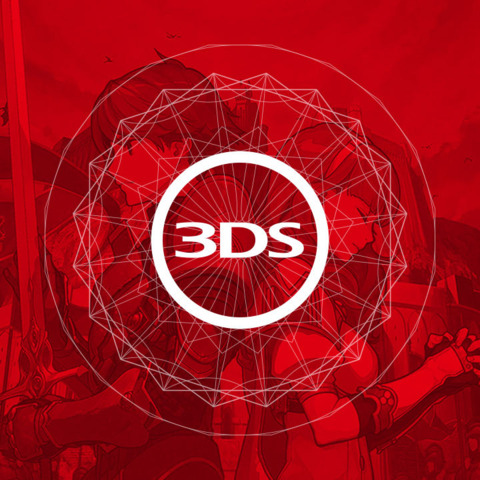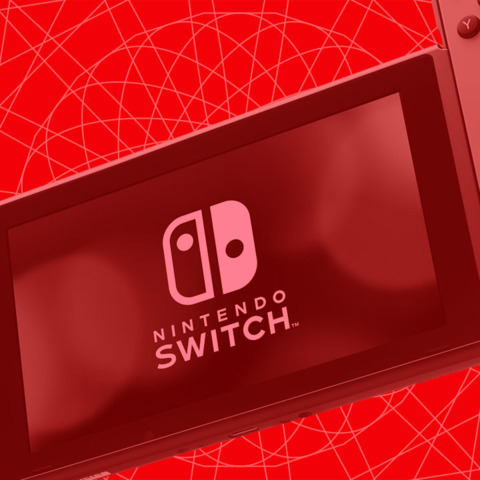When the Oculus Rift, HTC Vive, and PlayStation VR released in 2016, they were derided as being too expensive. All three VR headsets have received significant price drops in 2017, however, making them much more accessible. VR may still be far from mainstream, but its market share grew steadily in 2017. Let's look back at the medium's highlights (and lowlights) over the past year.
All three VR headsets have received significant price drops in 2017
Oculus Significantly Reduces Rift Pricing, Steadily Gains Market Share
Coming into 2017, the HTC Vive had momentum over the Rift in a battle between the two PC VR headsets. The past year has arguably been more kind to the Facebook-backed platform, however. While the Rift and its Touch controllers retailed for a combined $800 at the beginning of the year, the bundle received a notable price drop to $600 in March. Oculus then temporarily dropped the price of the bundle to $400 with its summer sale. The device became a big-seller on retail outlets like Amazon as a result, and the company permanently cut the bundle's price to $400 in October.
2017 also marked the one-year anniversary of the Touch controllers. While many users reported having tracking issues at launch, Oculus has solved those problems through software updates and now there are over 300 titles that support Oculus' motion controllers. The platform also officially introduced support for room-scale with three sensors in 2017, moving out of its experimental beta state when it was introduced in 2016.
Another Crab's Treasure Is A Soulslike 3D Platformer | GameSpot Review Stellar Blade Review Super Monkey Ball Banana Rumble - Official Multiplayer Features Trailer Nintendo 64 – April 2024 Game Updates – Nintendo Switch Online PUBG | Erangel Classic Returns Gori: Cuddly Carnage | Meow Launch Date Announcement Trailer Genshin Impact - "Arlecchino: Afterglow of Calamity" | Collected Miscellany Marvel Rivals - Official Loki Character Reveal Trailer | The King of Yggsgard Fortnite Festival - Official Billie Eilish Cinematic Season 3 Trailer Remnant 2 - The Forgotten Kingdom | DLC Launch Trailer Stellar Blade - Official "The Journey: Part 2" Behind The Scenes Trailer | PS5 Games Dead by Daylight | Tome 19: Splendor | Reveal Trailer
Please enter your date of birth to view this video
By clicking 'enter', you agree to GameSpot's
Terms of Use and Privacy Policy
The Rift received many respectable exclusives in 2017, which include Robo Recall, Lone Echo, Echo Arena, Wilson's Heart, Arktika.1, and more. The company also revealed some compelling upcoming games at its Oculus Connect 4 event in October, such as Ubisoft's multiplayer shooter Space Junkies and what could be a Titanfall-inspired VR game from Respawn Entertainment.
The Rift received many respectable exclusives in 2017
On the user interface front, the Oculus Store still needs a lot of work, but the company has implemented refunds and announced Dash, which will allow users to launch their favorite desktop apps while they're in VR.
At the tail end of the year, Oculus showed its continued commitment to mobile VR and announced Oculus Go, which is an all-in-one mobile VR headset that doesn't require a phone. The company also showed off its updated Santa Cruz headset prototype, which featured new motion controllers coupled with inside-out tracking that provides six degrees of movement without the need for external trackers.
The Vive Introduces New Peripherals, But Loses Momentum
At the beginning of the year, HTC introduced the Deluxe Audio Strap for the Vive. It integrated headphones and made the heavy head-mounted display much more comfortable, which was important considering the Vive was arguably the most uncomfortable HMD of the bunch. HTC also lowered the price from $800 to $600 shortly after Oculus dropped the price of its Rift bundle to $400. While the Vive is still more expensive than the Rift, owners do get room-scale right out of the box with Valve's included lighthouse trackers.
Another Crab's Treasure Is A Soulslike 3D Platformer | GameSpot Review Stellar Blade Review Super Monkey Ball Banana Rumble - Official Multiplayer Features Trailer Nintendo 64 – April 2024 Game Updates – Nintendo Switch Online PUBG | Erangel Classic Returns Gori: Cuddly Carnage | Meow Launch Date Announcement Trailer Genshin Impact - "Arlecchino: Afterglow of Calamity" | Collected Miscellany Marvel Rivals - Official Loki Character Reveal Trailer | The King of Yggsgard Fortnite Festival - Official Billie Eilish Cinematic Season 3 Trailer Remnant 2 - The Forgotten Kingdom | DLC Launch Trailer Stellar Blade - Official "The Journey: Part 2" Behind The Scenes Trailer | PS5 Games Dead by Daylight | Tome 19: Splendor | Reveal Trailer
Please enter your date of birth to view this video
By clicking 'enter', you agree to GameSpot's
Terms of Use and Privacy Policy
Several peripherals were revealed for the Vive this year. TPCast is a third-party add-on that allows the Vive to go wireless with minimal added latency. HTC also began to sell Vive Trackers that will allow you to see non-tracked accessories in VR, though time will tell if they will provide a meaningful impact to consumers.
In 2017, HTC pushed its Viveport store and subscription service, the latter of which allows users to play up to five VR games a month starting at $7. But many users have reported that it's been a bit of a buggy mess, even causing blue-screen issues. Throughout the year, many users have also complained that HTC's customer service has been slow and unresponsive when it comes to repair and replacement issues.
Another Crab's Treasure Is A Soulslike 3D Platformer | GameSpot Review Stellar Blade Review Super Monkey Ball Banana Rumble - Official Multiplayer Features Trailer Nintendo 64 – April 2024 Game Updates – Nintendo Switch Online PUBG | Erangel Classic Returns Gori: Cuddly Carnage | Meow Launch Date Announcement Trailer Genshin Impact - "Arlecchino: Afterglow of Calamity" | Collected Miscellany Marvel Rivals - Official Loki Character Reveal Trailer | The King of Yggsgard Fortnite Festival - Official Billie Eilish Cinematic Season 3 Trailer Remnant 2 - The Forgotten Kingdom | DLC Launch Trailer Stellar Blade - Official "The Journey: Part 2" Behind The Scenes Trailer | PS5 Games Dead by Daylight | Tome 19: Splendor | Reveal Trailer
Please enter your date of birth to view this video
By clicking 'enter', you agree to GameSpot's
Terms of Use and Privacy Policy
On Valve's end, the company revealed its Knuckle Controllers towards the tail end of last year, which track individual fingers and will allow Vive users to grip and release virtual objects by way of a strap that attaches to users' hands. Unfortunately, only certain developers have them today, and Valve hasn't announced an official release date for the controllers as of yet. Early on in the year, Valve revealed that it was working on three full VR games, but it disappointingly hasn't revealed any screenshots or info on any of them since.
SteamVR got a wide variety of new games throughout the year. Notable standouts include Pavlov VR, which many refer to as virtual reality's Counter Strike, and Gorn, which is an arena hack-and-slash game that takes full advantage of room-scale VR. The year's end is topped off by Bethesda's Fallout VR and Doom VFR shooters.
Valve revealed that it was working on three full VR games, but it disappointingly hasn't revealed any screenshots or info on any of them since.
PlayStation VR Leads Virtual Reality Sales
Sony recently announced that it has sold over two million PlayStation VR headsets to date, which shows that PS4 owners have a healthy appetite for VR.
Another Crab's Treasure Is A Soulslike 3D Platformer | GameSpot Review Stellar Blade Review Super Monkey Ball Banana Rumble - Official Multiplayer Features Trailer Nintendo 64 – April 2024 Game Updates – Nintendo Switch Online PUBG | Erangel Classic Returns Gori: Cuddly Carnage | Meow Launch Date Announcement Trailer Genshin Impact - "Arlecchino: Afterglow of Calamity" | Collected Miscellany Marvel Rivals - Official Loki Character Reveal Trailer | The King of Yggsgard Fortnite Festival - Official Billie Eilish Cinematic Season 3 Trailer Remnant 2 - The Forgotten Kingdom | DLC Launch Trailer Stellar Blade - Official "The Journey: Part 2" Behind The Scenes Trailer | PS5 Games Dead by Daylight | Tome 19: Splendor | Reveal Trailer
Please enter your date of birth to view this video
By clicking 'enter', you agree to GameSpot's
Terms of Use and Privacy Policy
The headset itself went from $400 down to $300 for a limited time, and Sony also revealed new PSVR bundles that include the PlayStation camera, Move controllers, and games like Skyrim VR and Doom VFR for $450. These new bundles come with a slightly modified headset that offers an HDR passthrough.
Sony recently announced that it has sold over two million PlayStation VR headsets
The PSVR's success was largely driven by exclusive standouts that include Resident Evil 7 and Skyrim VR. Sony also released Farpoint, which introduced PSVR's new Aim controller, which owners can also use with Doom VFR. Sony particularly showed its commitment to VR at its Paris Games Week even in October, where it revealed a bunch of new VR games including Blood & Truth and Megalith.
Another Crab's Treasure Is A Soulslike 3D Platformer | GameSpot Review Stellar Blade Review Super Monkey Ball Banana Rumble - Official Multiplayer Features Trailer Nintendo 64 – April 2024 Game Updates – Nintendo Switch Online PUBG | Erangel Classic Returns Gori: Cuddly Carnage | Meow Launch Date Announcement Trailer Genshin Impact - "Arlecchino: Afterglow of Calamity" | Collected Miscellany Marvel Rivals - Official Loki Character Reveal Trailer | The King of Yggsgard Fortnite Festival - Official Billie Eilish Cinematic Season 3 Trailer Remnant 2 - The Forgotten Kingdom | DLC Launch Trailer Stellar Blade - Official "The Journey: Part 2" Behind The Scenes Trailer | PS5 Games Dead by Daylight | Tome 19: Splendor | Reveal Trailer
Please enter your date of birth to view this video
By clicking 'enter', you agree to GameSpot's
Terms of Use and Privacy Policy
Considering the PlayStation Camera and Move controllers weren't originally designed for VR, however, much of the community is clamoring for an improved tracking system and more refined controllers that feature joysticks.
Other Matters, In Brief
Pimax's 8K VR headset surpasses Oculus Rift's Kickstarter to be the biggest crowdfunded VR headset.
Microsoft and its hardware partners that include Acer, Lenovo, and HP release their Mixed Reality VR headsets towards the tail end of the year.
Lenovo, in partnership with Disney, releases a $200 augmented reality headset that allows users to play Star Wars: Jedi Challenges with their phones.
Verdict
While VR may not have gone mainstream in 2017, it takes years for even the most disruptive tech to reach mass market adoption. There have certainly been pitfalls along the way. For instance, CCP Games announced that it would suspend resources on developing new VR games, and the medium could certainly use more big-budget AAA games, but it's important to acknowledge that VR is still relatively new and that high-quality games often take years to develop.
Oculus, HTC, and Sony have lowered the prices on their respective headsets, which has bolstered adoption across the board. Considering that VR is still a new, growing market meant that many third-party developers opted to release their games on all three major VR platforms. In fact, many fun games like Rec Room and Star Trek Bridge Crew are even cross platform across all three headsets. All of these contributions lead to a case where a rising tide lifts all boats in the burgeoning industry.
| The Good | The Bad |
|---|---|
|
|



